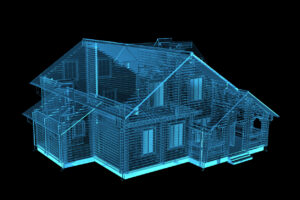Stairways provide essential vertical mobility in homes, workplaces, and public spaces. However, if built or maintained improperly, they also pose a significant safety risk. Data from the National Electronic Injury Surveillance System (NEISS) indicates that from 1990 to 2012, an estimated 24.76 million individuals were treated in emergency departments for stair-related injuries in the United States, equating to roughly 1 million patients annually. This alarming statistic underscores the need for increased awareness and preventive measures to mitigate stair-related accidents.
Stair-Related Injury Trends
According to the NEISS research data, the number of stair-related injuries has shown a fluctuating pattern over the years. Between 1990 and 1996, there was a 12.6% decrease in the annual injury rate. However, from 1996 to 2012, the rate increased by 24.0%. This upward trend could be attributed to several factors, including increased phone usage while using stairs and potentially aging buildings that lack regular maintenance and fail to comply with building codes.
Among patients with stair-related injuries, the NEISS found that sprains and strains (32.3%), soft tissue injuries (23.8%), and fractures (19.3%) were the most common types of injury. The lower extremities (42.1%) and head/neck (21.6%) were the most frequently injured body regions. Notably, children aged 10 years or younger experienced more head and neck injuries, whereas older adults were more prone to fractures.
Causes of Stair-Related Falls
Understanding the common causes of stair-related accidents is crucial for implementing effective safety measures. Some prevalent risk factors include:
Prevention Strategies
To reduce stair-related injuries, a combination of design improvements, maintenance, and behavioral changes is necessary. Key safety measures include:
- Proper Lighting: Ensure staircases have ample lighting, with switches available at both ends. Motion-activated lights can further enhance safety.
- Handrails Installation: Secure continuous handrails on both sides of the staircase that have graspable geometry and provide critical support. Circular handrails provide optimal graspable geometry.
- Non-Slip Surfaces: Applying non-slip adhesive strips or using textured stair treads can significantly improve traction.
- Regular Maintenance: Periodically inspecting and repairing stairs prevents structural hazards.
- Step Uniformity: Consistent step height and depth help prevent unexpected missteps. Stair projects or lips are prohibited by the NFPA to prevent tripping hazards.
- Clear Visual Indicators: Painting the stairs in contrasting colors on step edges can improve visibility, especially for individuals with vision impairments.
- Safe Footwear: Choosing shoes with proper grip can reduce slip risks.
- Education and Awareness: Promoting stair safety awareness can encourage more cautious navigation.
- Child and Pet Safety Measures: Installing safety gates at stair entrances can protect young children and pets.
- Minimizing Distractions: Encouraging focused stair use without multitasking enhances overall safety.
- Adjust Stairs Based on NFPA Stair Codes: All new buildings must comply with the National Fire Protection Association (NFPA) stair codes. Meanwhile, some existing buildings, depending on the type of occupancy and local codes, may not need to comply with NFPA Standards. However, adhering to the NFPA’s stair dimension criteria and handrail requirements will ensure user safety. For more information on the NFPA’s dimensional criteria, click here.
- Proper Lighting: Ensure staircases have ample lighting, with switches available at both ends. Motion-activated lights can further enhance safety.
Conclusion
The implementation of improved stair design, routine maintenance, and staying alert when using stairs can significantly reduce the risks associated with stair use. In the digital age, mindlessly walking down the stairs while reading our phones can be a common habit, but it is extremely dangerous.
By staying alert, being proactive on building maintenance, and ensuring buildings are in compliance with state building codes and NFPA codes, we can reduce the risk of stair-related injuries.
At CED Technologies, our expert engineers offer a comprehensive analysis of your stair-related injury cases. Our team has a deep understanding of how biomechanics, building codes, and human factors can lead to stair-related injuries. Contact us today to learn how we can help!






